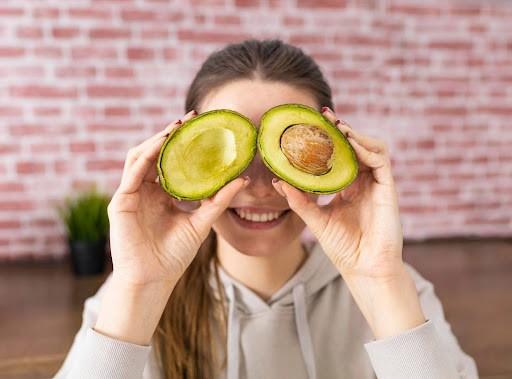I Have Avocado Gastritis. Here’s What Happened When I Ate Avocado Every Day
Avocado and Gastritis: Is it Safe or Will it Worsen Symptoms?

Curious if avocados are safe for gastritis? Here’s my personal two-week journey of eating avocado daily with real-life symptoms, reactions, and medical overview.
How it All Started
I was diagnosed with chronic gastritis almost a year ago. It started subtly with mild bloating and discomfort after meals. But within months, my stomach was reacting to any food I ate in a day. I was in constant distress, always searching for safe meals, and had to second-guess every food I ate to avoid the discomfort. In search of a solution to my predicament, I had to look into dietary suggestions. While researching, I came across food blogs, medical articles, and countless online forums. One food kept popping up: avocado.
A powerhouse of nutrients avocado is celebrated for its heart-healthy fats, fiber, and anti-inflammatory properties. But is it safe for someone with an irritated stomach lining? That question led me to try eating avocado every day for two weeks, and here’s what happened.
Week 1: Hopeful Beginnings
Day 1: Trying Avocado For The First Time in Months
Honestly, avocado wasn’t part of my diet for most of my adult life. I hadn’t eaten avocado in months, I was afraid that its high fat content would irritate my stomach. On Day 1, I started small: half an avocado mashed on lightly toasted white bread with a pinch of salt for breakfast. No pain. No bloating. In fact, I felt full without the usual post-meal discomfort.
Day 3: First Signs of Fullness

By Day 3, I was eating almost a full avocado a day, split between breakfast and lunch. I wasn’t in pain, but I felt full. Avocados are rich in monounsaturated fat, which digests slowly. That heaviness lingered in my upper abdomen for hours, giving me a bloated feeling. Still no burning sensation, so I kept going.
Day 5: Trouble Brewing?
That morning, I blended a smoothie with half an avocado, oat milk, and banana. It was very delicious and smooth. Unfortunately, by late afternoon, I felt a dull gnawing ache in my stomach. It wasn’t a sharp pain, but it was noticeable for a moment. I had questions brewing in my mind. Was it the fat content? Or something else?
Day 7: A Minor Setback
By the end of the week, I made a salad with avocado, grilled chicken, and a drizzle of olive oil. Two hours later, I had acid reflux, and the stomach burn was back. This time it was intense. I had a rough night. I had to take antacid medication for the pain. I was starting to think it was the combination of fats (avocado and oil) that was too much. I had been eating avocado all week.
What the Science Says: Is Avocado Good for Gastritis?
Before we get into Week 2, I checked out what the research and experts say about avocados and gastritis:
- Low Acid: Avocado has a pH of 6.5-7.0, so it’s low acid and stomach-friendly.
- Healthy Fats: The monounsaturated fats can reduce inflammation in some cases, which could soothe an irritated stomach lining.
- Fiber Rich: One avocado has 10 grams of fiber, which can help with digestion.
- Nutrient Dense: Packed with potassium, folate, vitamins K, E, and B6, avocados nourish the gut.
But…
- High Fat Slows Digestion: Fat slows down gastric emptying, which can cause bloating or discomfort in gastritis sufferers.
- Contains Salicylates: Natural compounds in avocado can irritate sensitive stomachs.
So while avocados aren’t bad for you, they can make symptoms worse depending on how you prepare them and how much you eat.
According to Healthline, avocado can be part of a gastritis diet when eaten in moderation and without trigger foods.
Week 2: Adjustments and Insights

Day 8: Scaling Back
I cut back to a quarter avocado in the morning. Result? Symptom-free. No bloating, no reflux, no discomfort. I felt hopeful again. Maybe moderation was the key.
Day 10: The Fat Factor
I experimented again by adding avocado to dinner—this time with brown rice and sautéed veggies. Although the meal was healthy, I felt too full and slightly nauseous within an hour. Again, it wasn’t just the avocado but the combined fat load of the meal.
Day 11: A Clean Break
To see how much avocado was really affecting me, I skipped it completely for a day. And to my surprise, I felt lighter and more energetic. My stomach appreciated the break.
Day 13: Controlled Reintroduction
I went back to avocado—this time only 2 tablespoons with white rice and boiled carrots. Result? Perfect. No symptoms, and I felt nourished. I had figured out what I was starting to suspect: avocado isn’t the enemy; quantity and pairing are what matter.
Day 14: Experiment Ends
By the final day, I had figured out my avocado balance. I had come to the realization that anything more than half an avocado daily or pairing it with other high-fat foods led to discomfort. But small, simple portions worked. I could still have avocado in my diet without frustrating my gut.
Gastritis and Dietary Triggers
Gastritis is a broad term that includes a range of stomach lining inflammation caused by various factors, infections (like H. pylori), stress, overuse of NSAIDs, alcohol, and autoimmune disorders. Diet plays a huge role in managing symptoms.
For many people, acidic, spicy, fried, or fatty foods are the biggest culprits. But food tolerance is highly individual. That’s why food journals and elimination diets are often recommended. It’s not just about “good” or “bad” foods, but what works for your specific gut environment.
Avocado falls into a gray area. It’s nutritious, but because it’s also high in fat and salicylates, it might not be for everyone, especially those with active gastritis flare-ups.
Medical Commentary: What a Dietitian Told Me

After the experiment, I spoke with a registered dietitian who specializes in digestive health. She agreed with what I had found.
“Avocados can be good for those with gastritis, but only in moderation and not during flare-ups. Don’t combine with other fats or acidic ingredients. Check how you feel 1-2 hours after eating.”
She also explained that during active inflammation, the stomach lining becomes hyper-sensitive, and even gentle foods can trigger symptoms. Avocados are nutritious but can be problematic for those with slow digestion or fat sensitivity.
My Avocado Experiment Takeaways
After two weeks of eating avocado every day with chronic gastritis, I walked away with some lessons—some expected, others not. Here’s what I learned:
1. Avocado Is Not a Miracle Cure
Let me be clear: avocado didn’t cure my gastritis.
Despite all the online hype and the “superfood” label, avocado didn’t eliminate my symptoms. I wasn’t suddenly able to eat everything without discomfort, nor did I feel dramatically better just because I added it to my meals. What I noticed instead was that avocado didn’t make things worse, which, for someone with a sensitive stomach, is already a win.
It was neutral to slightly positive, depending on how and when I ate it. When plain and with bland food, avocado was gentle. But expecting it to reduce inflammation or heal my stomach lining overnight was wishful thinking.
I’m not dismissing its benefits. Avocado is nutrient-dense—full of fiber, potassium, B vitamins, and healthy fats. But it’s not medicine. If you’re looking for a single food to fix gastritis, you’ll be disappointed. Healing is more complicated than any single food choice.
2. Portion Size Is Everything
One of the biggest things I learned is that how much I eat matters just as much as what I eat.
In the first few days, I ate half an avocado per meal, thinking I was being healthy. But after a few days, I felt sluggish, bloated, and that heavy feeling under the ribs. Not excruciating, but enough to slow me down.
Once I scaled back to a quarter or half an avocado a day, things improved. I ate in the mornings when digestion is calmer and avoided eating with heavy or spicy food. That made a big difference.
For me, moderation turned avocado from an irritant to something I could actually enjoy.
3. Pairing Matters A Lot
I thought that avocado, being healthy, would be fine no matter how I ate it. But certain combinations made all the difference. When I ate avocado with olive oil, fatty meats, or even dairy, like cheese or yogurt, I felt worse. My stomach would tighten, gurgle, or feel warm and uncomfortable afterwards. It wasn’t always immediate, but it was noticeable.
It’s not just the avocado, it’s the total fat load. Avocados are rich in monounsaturated fat, which can be soothing in small doses. But add that to other rich foods, and suddenly it’s too much for a sensitive stomach.
My advice? Keep it simple. I felt best when I paired avocado with plain toast, steamed rice, or soft-boiled eggs. Once you add oils, nuts or sauces, you’re asking for trouble.
4. Listen to Your Body
There’s a lot of advice online. And while some of it is helpful, not all of it applies to your body.
One person might swear by avocado as a healing food, while another might find it completely intolerable. And they’re both valid. Gastritis varies depending on what triggered it, your general gut health, and even the time of day.
That’s why it’s so important to track your own reactions. I kept a simple food journal—just notes about what I ate, when, and how I felt afterward. Over time, patterns emerged. I learned what worked, what didn’t, and when to say “no thanks” even to foods labeled as “healthy.”
5. Diet is Not Everything

Yes, diet plays a huge role in managing gastritis, but it’s not everything. Stress, for example, had a massive impact on my symptoms. On days when I was anxious or sleep-deprived, even safe foods caused discomfort. No amount of avocado could fix that.
Hydration, sleep, managing anxiety, and reducing my use of painkillers like ibuprofen also mattered. Healing from gastritis requires a holistic approach. Avocado might help, but it won’t do much if you’re skipping meals, popping NSAIDs daily, or living in a constant state of burnout.
I’ve come to see my body as a system, not a machine that needs one part fixed, but a whole ecosystem that needs balance.
Avocado Gastritis: Frequently Asked Questions
Q: Can avocados cause gastritis?
A: Not directly. But in sensitive individuals, especially during flare-ups, they might worsen symptoms due to fat content.
Q: What’s the safest way to eat avocado with gastritis?
A: Start with small amounts (1–2 tablespoons), pair with low-fat, bland foods like white rice or plain toast, and eat during symptom-free periods.
Q: Are avocado smoothies okay?
A: Only if they’re low-acid and low-fat overall. Skip citrus fruits and heavy nut milks.
Q: Is avocado toast safe for breakfast?
A: Yes, but use plain bread and keep the avocado portion under half.
Q: Can avocado help heal gastritis?
A: There is no direct evidence that avocado can heal gastritis. However, its anti-inflammatory and nutrient-dense profile may support overall digestive health as part of a balanced diet.
Final Thoughts: Should You Eat Avocado If You Have Gastritis?
Yes, but with caution. My two-week avocado journey taught me that even healthy, nutritious foods can irritate a sensitive stomach if eaten carelessly. The key lies in portion control, timing, and food combinations.
Avocados are not off-limits, but they are not a free pass either. Think of them as a test food: start small, track your reaction, and decide from there.
Today, I still eat avocado, just not daily, and never in large amounts. It’s a beautiful, nourishing fruit that deserves a place in my diet, but on my stomach’s terms.



